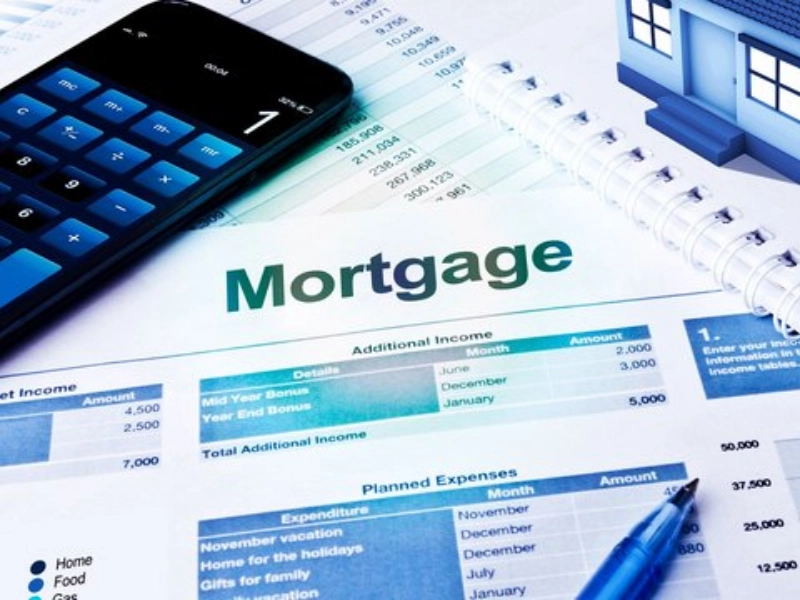Mortgage lenders, like employers that pay salaries, need documentation of income. But supplying that paperwork can be more difficult for independent contractors. Here's how to streamline the procedure:.
Choose the sort of mortgage you require.

Lenders usually want extra financial records, such as profit and loss statements, bank statements from both personal and business accounts, and invoices, from mortgage applicants who are unable to provide W-2s or pay stubs as proof of income. They might also request 1099s for contract employment and business costs on tax returns.
The majority of lending programmes, including conventional, FHA, and VA, require proof of at least two years of steady self-employment. However, a borrower who has only been in business for a year can increase their chances by augmenting their income with additional sources, like contracting or freelance work, and by reducing their debt-to-income (DTI) ratio by making a sizable down payment and using credit utilisation.
If a borrower is not eligible for a conventional mortgage, they may want to look into other loan options, like jumbo or non-QM loans. The latter is simpler for borrowers with atypical employment or cash flow to obtain and offers loan amounts above the conforming loan limit.
Request Preapproval

Obtaining mortgage preapproval demonstrates to sellers your seriousness about becoming a property buyer. In order to determine your creditworthiness, lenders will look at all of your financial information, including your self-employment status.
You can have more freedom and control over your job when you work for yourself. However, there are other obligations, such as filing taxes on taxable income, paying estimated taxes on a quarterly basis, and so forth.
There are various forms of self-employment, from small business owners and entrepreneurs to independent contractors and freelancers. You will require comprehensive paperwork, such as formal invoices, audited profit and loss statements, and bank statements (personal and business), regardless of the nature of your employment. This may require a large time investment. Dealing with an accountant who has dealt with independent contractors is worthwhile.
Locate a Lender

Although being your own employer has numerous advantages, it can also make qualifying for a mortgage more difficult. Finding a lender who has experience working with self-employed borrowers and is aware of the particular financial problems they present is the best approach to improving your chances.
When determining a borrower's eligibility for a mortgage, lenders usually want business tax returns with all pertinent schedules for the last two years. In addition, they may request other documentation, such as bank statements, profit and loss statements, asset listings, proof proving the borrower's source of income, and client invoices. A down payment as little as 3% or 3.5% may also be required, contingent on the nature of the loan and your credit history.
Additionally, you should keep business and personal expenses separate to prevent a greater credit utilisation rate, which could harm your application for a mortgage.
Prepare your documentation.

Documentation of your assets and income is what lenders will check for when you apply for a mortgage. This comprises bank and investment account statements, tax returns, debt information, and other pertinent documents. It also includes profit and loss records for businesses.
You have to operate as an independent contractor or sole proprietor in order to be considered self-employed. The IRS states that you must additionally pay self-employment tax, which consists of the Social Security and Medicare taxes that are normally deducted by employers from their employees' paychecks.
Working for yourself can offer independence, adaptability, and the chance to achieve your objectives. However, there are drawbacks as well, such as increased job risk and the possibility of irregular or cyclical income. Acknowledging and valuing your strengths and abilities, together with the domains in which professional guidance is required, can be beneficial.
Obtain a down payment.

A down payment is often required for those who wish to buy a home. To increase their down payment, they can borrow money from family, take on a part-time job, or reduce their non-essential spending. They can also investigate assistance programmes like Freddie Mac's Home Possible and Fannie Mae's HomeReady, which are both accessible through participating lenders, if they lack the required finances. They might also inquire about receiving a gift from a relative, but there might be tax ramifications and they might need to provide proof of the money's origin to show that it isn't a loan. A large down payment might also lower monthly expenses by removing the requirement for private mortgage insurance. In order to prevent PMI, it is ideal to put down at least 20%.
Recommended Reading: Independent Contractor? How to Qualify for a Mortgage
























The value density is refreshing.
Reduces semantic drift risk.
Prepares for observability layering.